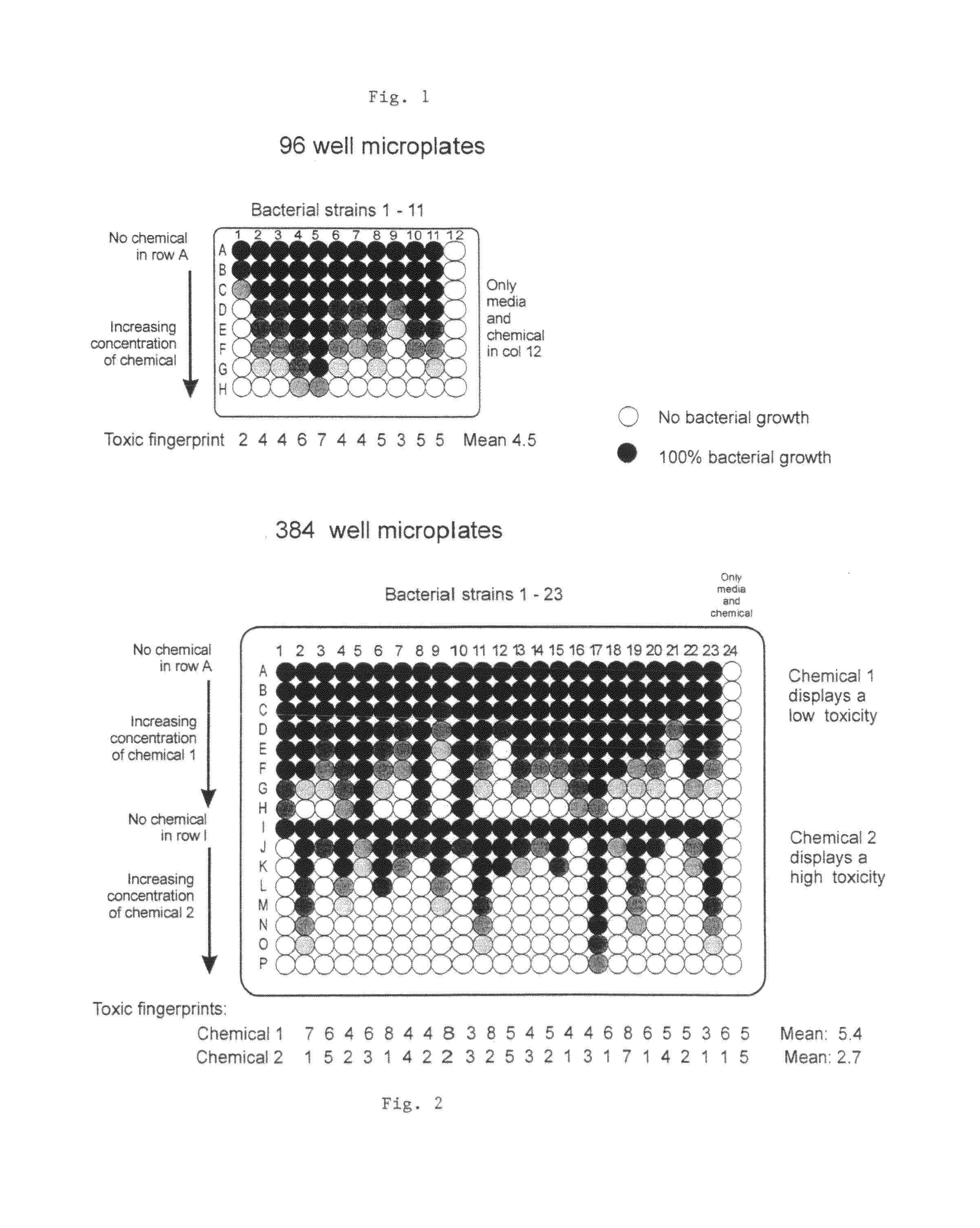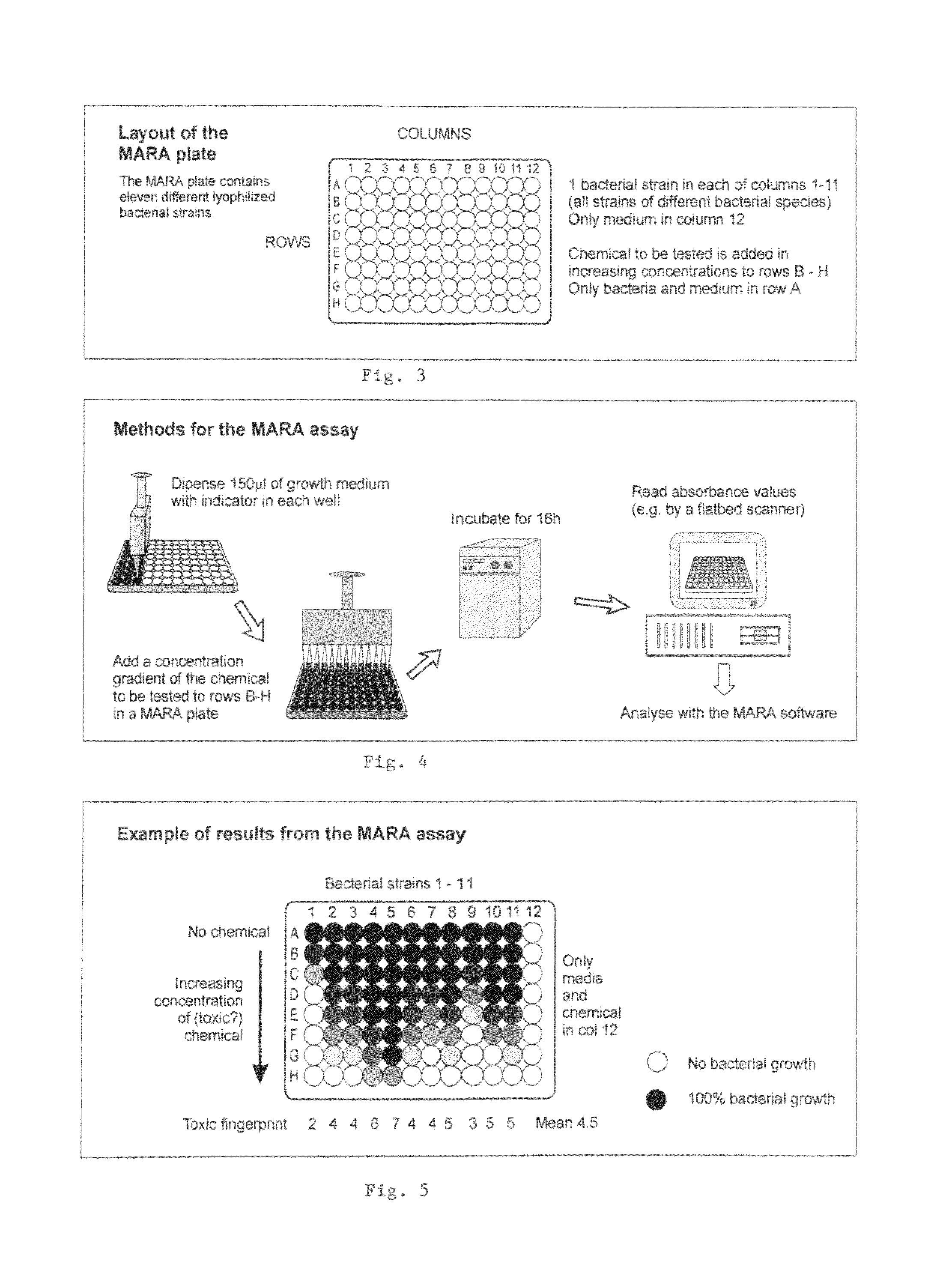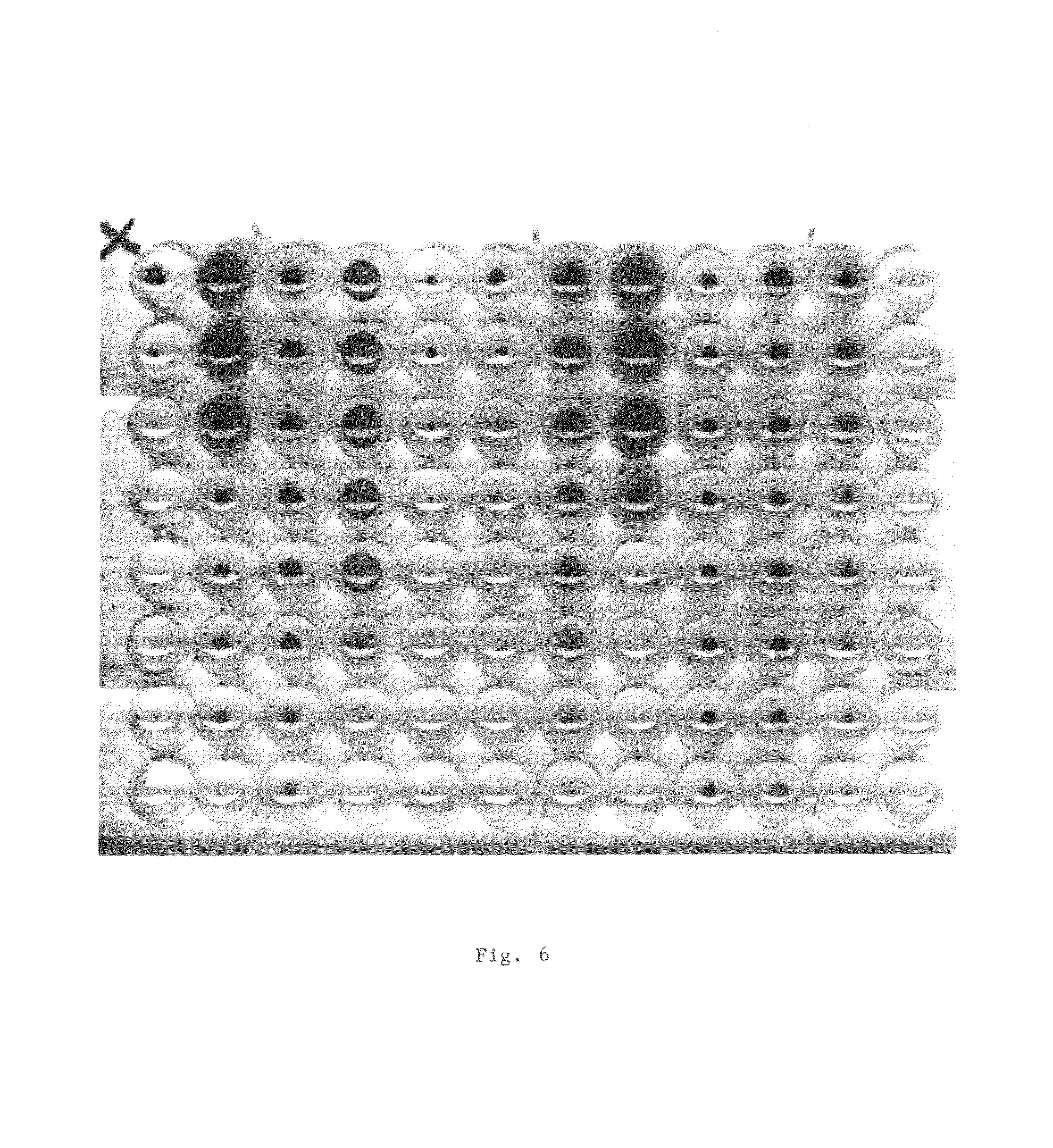Method for determining the toxicity of an environmental or chemical sample
a technology of environmental or chemical samples and toxic effects, applied in the field of methods, can solve the problems of long sample preparation time and high price, and may not be used in the field of determining the toxic effects of unknown chemical compounds, and achieve the effect of quick and inexpensive testing
- Summary
- Abstract
- Description
- Claims
- Application Information
AI Technical Summary
Benefits of technology
Problems solved by technology
Method used
Image
Examples
example 1
Cultivation and Lyophilization of Micro-organism With Subsequent Stability Study
[0051]The microorganism were first cultivated on nutrient agar for 24 h at 30° C. From each strain a loopfull of microorganism was suspended lyophilization media. 25 μl of the microbial suspensions were dispensed into each well in the flat-bottomed microplates, Lyophilisation of microorganism in microplates was carried out according to standard methods. After the lyophilisation, each microplate was packed in an air-tight plastic-aluminium bag together with silica gel. The plastic-aluminium bag was then sealed. The plates were stored at three different temperatures: at room temperature, at refrigerator temperature (4° C.) and at −20° C.
[0052]In order to define an appropriate lyophilization medium and storage and transportation conditions for the microplates containing lyophilized microorganism, the numbers of viable microorganism were determined directly after lyophilisation, and after one week, one month...
example 2
Collection of Micro-organism, Production of Media and Growth Test
[0074]The strains were collected from the environment. The isolates may be characterized by Gram staining, catalase and oxidase test, growth on different agar media, and their ability to give measurable growth responses with the indicators BromoThymol Blue (BTB, an acid-base indicator) and 2,3,5-tri-phenyl-terazolium chloride (TZR, a redox indicator).
[0075]A large subset of the strains showed good growth response in the presence of TZR, whereas fewer reacted well with BTB indicator.
[0076]The following protocol was used[0077]1. The strains that were going to be lyophilised were taken from the freezer and grown on nutrient agar (DIFCO) plates over night in 28° C.[0078]2. Colonies were taken from the agar plates and grown in 25 ml tubes containing 3 ml nutrient broth (DIFCO), 28° C. over night on a shaking table[0079]3. The broth was centrifuged (15 min, 3000 rpm) and the supernatant was removed
[0080]All strains in the pr...
example 3
[0103]The present example (results of which may be seen in FIG. 6) was performed according to the method of the present invention. An indicator device according to the present invention was also used. The pattern that was read and can be seen in FIG. 6 was compared in a computer to standard patterns whereby a correlation was obtained.
[0104]11 microbial strains in column 1-11 were used and column 12 served as control.
[0105]Unknown compound was added at a concentration of 6.4 mg / ml to all wells in row H, 3.2 mg / l to row G etc.
[0106]The parameters in the microplate were as follows: Min. conc.=0.1, Max. conc.=6.4, Dilution steps=2
Table 5 shows the relative growth amounts for the bacteria obtained after the incubation.
[0107]
TABLE 5Relative growth for bacteria in example 3.Unknown compound Min. konc = 0.1% Max. konc = 6.4% Dilution steps = 2BacteriumKonc.1234567891011NEGMean0 13601526137489152311231061105412181245915010240.1557153414251020581847109910651436118366209510.249151513541018543...
PUM
| Property | Measurement | Unit |
|---|---|---|
| temperature | aaaaa | aaaaa |
| temperature | aaaaa | aaaaa |
| storage temperatures | aaaaa | aaaaa |
Abstract
Description
Claims
Application Information
 Login to View More
Login to View More - R&D
- Intellectual Property
- Life Sciences
- Materials
- Tech Scout
- Unparalleled Data Quality
- Higher Quality Content
- 60% Fewer Hallucinations
Browse by: Latest US Patents, China's latest patents, Technical Efficacy Thesaurus, Application Domain, Technology Topic, Popular Technical Reports.
© 2025 PatSnap. All rights reserved.Legal|Privacy policy|Modern Slavery Act Transparency Statement|Sitemap|About US| Contact US: help@patsnap.com



